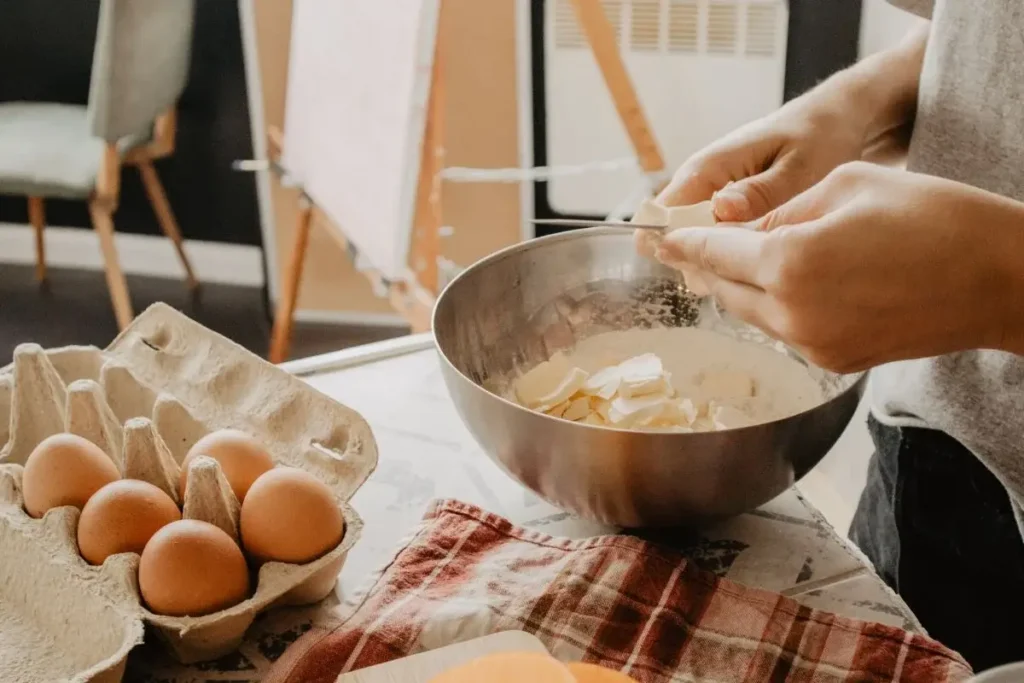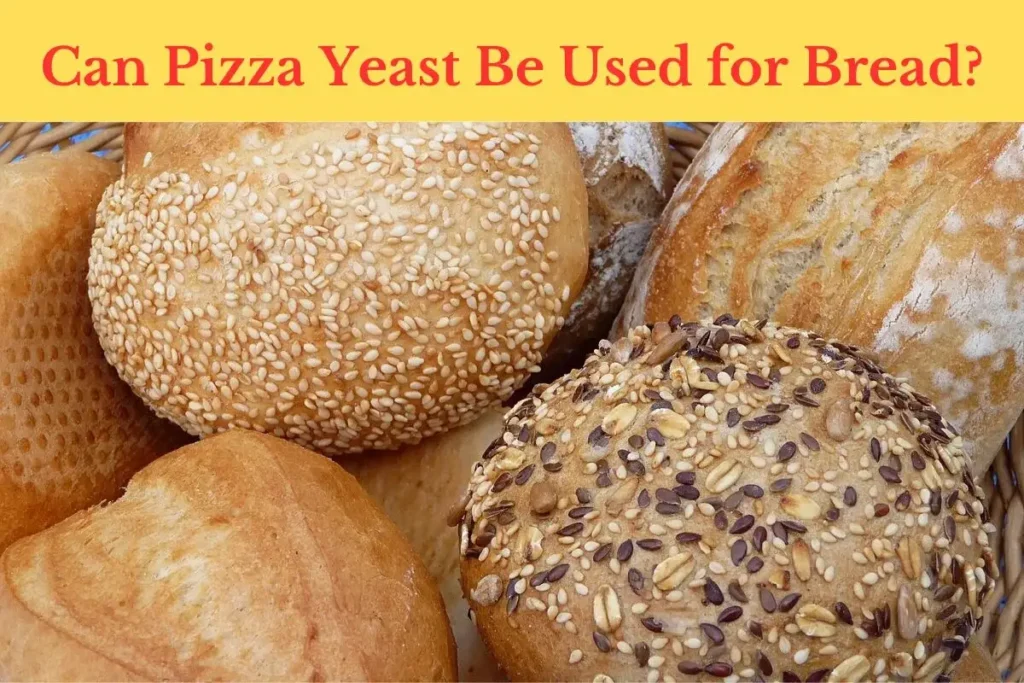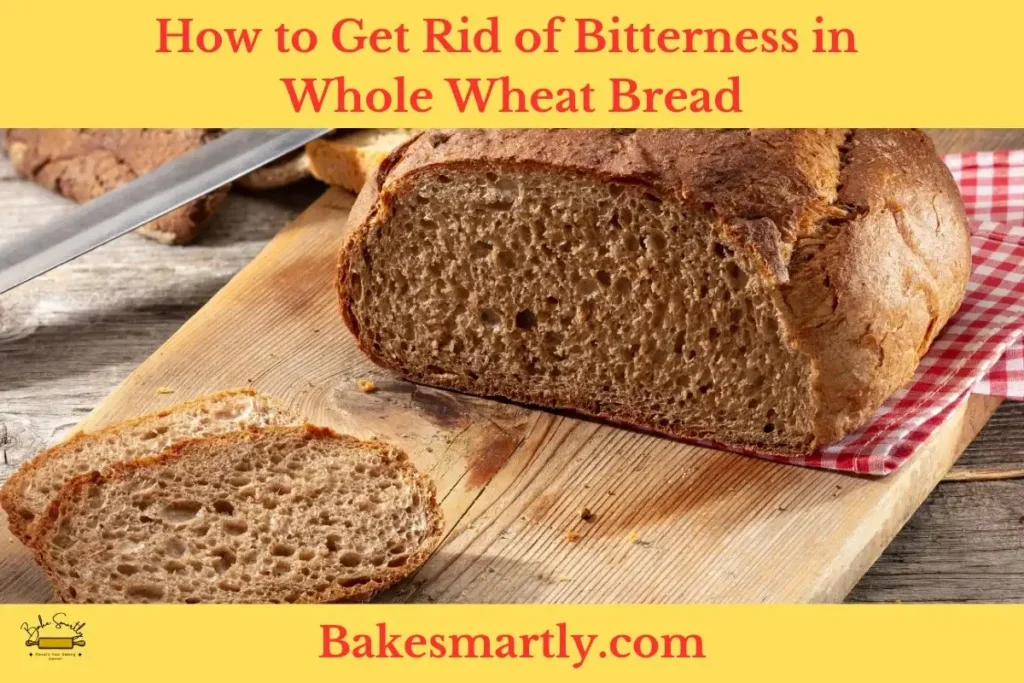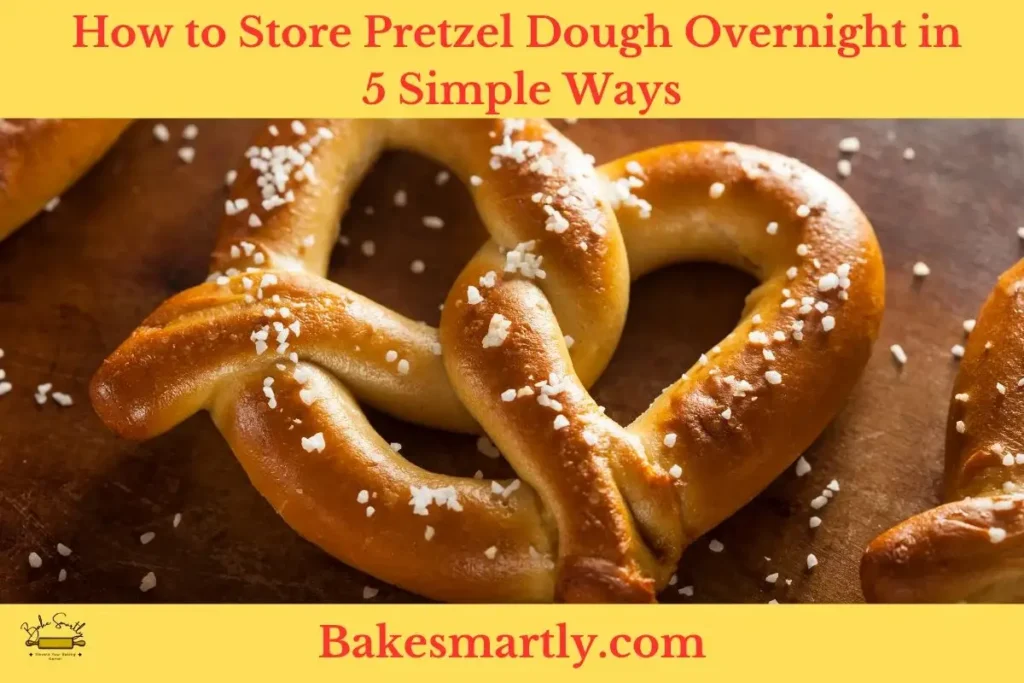
Does Ciabatta Bread Have Dairy? Here Is What You Need to Know
Are you a fan of ciabatta bread but wondering about its ingredients? You’re not alone. Lots of folks are curious about whether ciabatta bread has dairy. In this article, we’ll get to the bottom of it and look into what’s in this beloved Italian bread. Ciabatta bread is famous for being light and airy with a chewy crust that’s just delicious.
But what exactly goes into making this tasty bread? The main ingredients in ciabatta bread are flour, water, yeast, and salt. However, other ingredients can vary depending on the recipe and brand. While ciabatta bread usually doesn’t have dairy, it’s crucial to check the label or ask at your local bakery to make sure it fits your diet.
Some ciabatta variations or special recipes might include milk or butter for extra richness, but these aren’t standard in the traditional recipe. So, if you’re avoiding lactose or on a dairy-free diet, good news! You can probably enjoy ciabatta bread worry-free.
So, let’s go deeper into the world of Ciabatta bread and find out if it’s safe for dairy-free diets.
Table of Contents
ToggleWhat is Dairy?
Dairy, in cooking term, refers to stuff made from milk, mostly from animals like cows, goats, and sheep. This big category covers a bunch of foods we eat every day, like milk, cheese, yogurt, and butter.
- Milk, the main part of dairy, is a healthy liquid with things like calcium, vitamin D, and protein. It can be used in lots of cooking, making a base for tons of dairy products.
- Cheese, a varied and loved dairy treat, comes from thickening milk proteins. Cheeses have all sorts of textures and flavors, from soft brie to sharp cheddar, to fit different tastes and cooking styles.
- Yogurt, made by fermenting milk with helpful bacteria, not only has a creamy feel but also gives a boost of probiotics for gut health. People all over the world eat this dairy delight in different ways, whether plain or flavored.
- Butter, another milk product, is a key ingredient in cooking and baking. Its rich, smooth feel adds taste and moisture to lots of dishes, making it a must-have in the kitchen.
Knowing about dairy is important, especially when thinking about what you eat. While dairy gives us good nutrients, some people go for dairy-free options because of allergies, lactose issues, or just personal choices.

Common Ingredients in Ciabatta Bread
Ciabatta is this awesome Italian bread everyone loves, known for its light and crispy goodness. Making it involves a few basic ingredients that might sound fancy, but they’re actually pretty simple.
- Flour: The main thing in ciabatta is high-protein flour, usually a mix of different wheat flours. This is what gives the bread its special texture.
- Water: Water is a big deal in ciabatta. It mixes with the flour to make the dough, and getting the right balance is key to getting that cool, holey structure inside.
- Yeast: Yeast is the magic ingredient that makes the dough rise. It creates those bubbles that give ciabatta its unique airy feel.
- Salt: Salt does more than just make things tasty; it also helps control the yeast and makes the gluten structure strong. It’s a big player in getting the right flavor and texture.
- Olive Oil: People often use olive oil in ciabatta recipes. It adds a nice richness to the bread and helps make the crust softer.
- Biga or Poolish: Sometimes, bakers use pre-fermented dough called biga or poolish. It might sound fancy, but all it does is give the bread more flavor and make it even better overall.
Is there Dairy in Ciabatta Bread? | Answer Revealed
Many folks wonder if ciabatta bread has any dairy in it, especially if they’re keeping an eye on their diet. Usually, traditional ciabatta recipes don’t include any dairy stuff. The main ingredients in ciabatta—flour, water, yeast, salt, and sometimes olive oil—are all dairy-free.
But, you gotta be careful because there are different versions out there. Some store-bought or fancy ciabatta might sneak in some dairy for extra flavor or texture. They might toss in things like milk, butter, or cheese.
To make sure your ciabatta is dairy-free, take a good look at the ingredient list. Check for any dairy-related stuff, even if it’s just a little bit. This is important for folks who can’t handle lactose or have allergies.
If you’re particular about your diet, making ciabatta at home lets you have total control. You can go for dairy-free options, so you enjoy that awesome ciabatta taste without messing with your preferences or health.

Dairy-free Alternatives to Ciabatta Bread
If you’re watching what you eat or living a dairy-free life, you can still enjoy the yumminess of ciabatta bread. Luckily, there are plenty of non-dairy options that suit different tastes.
- Make Your Own Ciabatta: Whip up ciabatta at home and take charge of what goes in. Use things like plant-based milk, vegan butter, or olive oil instead of dairy to get that same awesome texture and flavor.
- Store-Bought Choices: Lots of bakeries and stores sell ciabatta without dairy. They swap out the usual dairy stuff for plant-based alternatives, making it a tasty option for folks with dairy issues.
- Gluten-Free Ciabatta: If you’re steering clear of both dairy and gluten, there are gluten-free ciabatta options out there. They’re usually made with different flours like rice or almond flour, giving you a yummy choice that fits different diets.
- Vegan Ciabatta Brands: Some brands focus on making vegan ciabatta, so no animal products, including dairy, go into the baking. It’s a good match for those following ethical and dietary choices, letting you indulge without feeling guilty.
- Artisanal Bakeries: Your local fancy bakeries are catching on to the dairy-free trend. They might have ciabatta made with different ingredients, so you can join the crowd looking for varied and inclusive food choices.
How to Identify Dairy in Ciabatta Bread
Start by checking the ingredients listed on the package or asking your baker for more info. While classic Ciabatta recipes usually have basic stuff like flour, water, yeast, and salt, there can be some variations.
Keep an eye out for any mention of dairy-related ingredients like milk, butter, or whey, as these might sneak into Ciabatta and change how it’s made.
But it’s not just direct dairy ingredients you need to watch out for. There’s a chance of cross-contamination, especially if the Ciabatta is made in a place that also handles dairy products. If you’re extra careful about dairy due to sensitivity or allergies, it’s a good idea to pick Ciabatta from places that specifically avoid dairy or allergens.
When you’re at a restaurant, don’t be shy about letting them know your dietary needs. Talk to the staff about what’s in the Ciabatta, stressing how important it is to steer clear of anything dairy.
Taking a proactive and watchful approach ensures you can enjoy the delicious taste of Ciabatta without compromising your dietary preferences.

Benefits of Dairy-Free Ciabatta Bread
Embracing dairy-free ciabatta bread goes beyond just accommodating dietary restrictions—it brings a bunch of cool benefits that add to your overall well-being and culinary enjoyment.
- No More Lactose Drama: Ditching the dairy in ciabatta means no more lactose, making it a great choice for folks with lactose intolerance. Say goodbye to the discomfort that comes with chowing down on lactose!
- Allergies? Not Today: If you’re allergic to dairy, choosing dairy-free ciabatta takes away the worry of setting off allergic reactions. It gives you a safe and tasty option if you’re sensitive to certain allergens.
- Vegan Vibes: Dairy-free ciabatta is totally in sync with vegan lifestyles, supporting ethical and sustainable eating. You can enjoy this delicious bread while sticking to your commitment to plant-based living.
- Less Saturated Fat: Regular ciabatta recipes with dairy can add to your saturated fat intake. Going for the dairy-free version can be a smart move for a heart-healthy diet. You get all the ciabatta goodness without loading up on saturated fat.
- Something for Everyone: Dairy-free ciabatta welcomes all kinds of dietary preferences, making it inclusive. Whether you’re following specific dietary rules, making ethical choices, or just trying out different foods, going dairy-free makes ciabatta accessible to a wider group.
- Mix It Up in the Kitchen: Dairy-free ciabatta’s neutral flavor lets you get creative in the kitchen. It’s not just for sandwiches—use it in sweet or savory dishes. It’s a versatile choice that adds a bit of flair to your culinary adventures.
How to Make Dairy-Free Ciabatta Bread at Home
Creating your own dairy-free ciabatta bread at home is a rewarding endeavor, allowing you to indulge in the delightful flavors and textures of this Italian classic without the inclusion of dairy.
Follow this step-by-step guide for a homemade, dairy-free ciabatta experience.
Ingredients:
- 4 cups high-protein flour (e.g., bread flour)
- 2 1/4 teaspoons active dry yeast
- 1 1/2 cups warm water
- 2 teaspoons salt
- 2 tablespoons olive oil

Instructions:
- Activate the Yeast: In a bowl, combine warm water with yeast and let it sit for 5-10 minutes until frothy. This indicates the yeast is activated.
- Mix Dry Ingredients: In a large mixing bowl, combine the flour and salt. Create a well in the center to pour in the activated yeast mixture.
- Form the Dough: Gradually incorporate the flour into the wet ingredients, stirring until a sticky dough forms. Add olive oil and continue kneading until the dough becomes smooth and elastic.
- First Rise: Place the dough in a lightly oiled bowl, cover with a damp cloth, and let it rise in a warm place for 1-2 hours, or until it doubles in size.
- Shape the Dough: Transfer the risen dough onto a floured surface. Divide it into two portions and shape each into a rectangle or oval, maintaining a rustic appearance.
- Second Rise: Place the shaped dough on a parchment-lined baking sheet. Cover with a damp cloth and let it rise for another 30-60 minutes, allowing it to expand.
- Preheat and Score: Preheat your oven to 450°F (230°C). Just before baking, use a sharp knife to score the top of the loaves with diagonal cuts.
- Bake to Perfection: Bake in the preheated oven for 20-25 minutes or until the ciabatta turns golden brown and produces a hollow sound when tapped on the bottom.
- Cool and Enjoy: Allow the dairy-free ciabatta to cool on a wire rack before slicing. The interior should be airy, with a chewy texture and a crisp crust.
- Optional Additions: Enhance your dairy-free ciabatta by incorporating herbs, garlic, or seeds into the dough for added flavor complexity.
- Store and Freeze: Store leftover ciabatta in an airtight container or freeze for future use. Reheat frozen slices in the oven for a few minutes to revive the freshness.
Frequently Asked Question (FAQS)
How Does Ciabatta Compare to Other Breads Regarding Dairy Content?
Ciabatta is generally low in dairy compared to some bread varieties. Understanding these differences empowers consumers to make informed dietary decisions.
Can Individuals with Lactose Intolerance Consume Ciabatta?
Most Ciabatta varieties are safe for those with lactose intolerance, but it’s advisable to verify the ingredients to ensure compatibility.
What ingredients should I look out for in Ciabatta?
Watch for milk, butter, or whey in the ingredient list, as these indicate dairy content.
Is Ciabatta Bread Suitable for Vegans?
Ciabatta bread, in its traditional form, typically does not contain dairy. However, it’s crucial to check labels for any added ingredients.
Does Ciabatta Bread Have Dairy | Final Thoughts
In conclusion, even though traditional ciabatta bread recipes usually don’t have dairy, it’s important to be careful. Some versions or store-bought options might sneak in dairy to make it richer. It’s crucial to check labels and ingredient lists, especially if you’re lactose intolerant or have allergies.
The good news is, there are many dairy-free alternatives, including homemade versions with plant-based ingredients. Choosing dairy-free ciabatta isn’t just about fitting dietary preferences; it also comes with perks like enjoying it without lactose, preventing allergies, fitting with vegan lifestyles, reducing saturated fat intake, and being versatile in cooking.
So, whether you’re dealing with dietary restrictions or just trying out new flavors, dairy-free ciabatta opens the door to a world of delicious possibilities.
Lindsey Mackenzie
About me
Hi there! I’m Lindsey Mackenzie, the founder of Bake Smartly. Baking has been my passion since childhood, growing up in my father’s bakery. With Bake Smartly, I’m excited to share my love for all things sweet and savory. Join me on this delicious journey as we whip up scrumptious treats and sprinkle joy into every bite!






